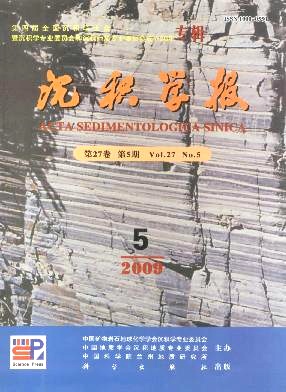Sequence and Depositional Architecture of Sedimentary Basin and Process Responses
- Received Date: 1900-01-01
- Rev Recd Date: 1900-01-01
- Publish Date: 2009-10-10
-
Key words:
- sequence architecture
Abstract: 〗aphic unit can be usually classified into several types of genetic deposits, that is, the normal regressive, forced regressive, transgressive and aggradational deposits. Depositional cycle of a third order sThe development of modern sequence stratigraphic theories, integrating the study of depositional process in the time and space configuration and the cyclic or rhythmic evolution of the Earth, has formed a innovative theory for the investigation of depositional facies in chronostratigraphic framework, and became an important prospecting tool for petroleum exploration. Basin fills can be usually divided into different sequence stratigraphic units consistence with different cycles. The regional sequence stratigraphic framework established by collating highorder sequence stratigraphic units confined by major unconformities is very important for the reconstruction of tectonopaleogeography and the strategic evaluation of petroleum exploration, and the high resolution sequence stratigraphic framework erected by tracing the low order, such as the forth or fifth odor sequence stratigraphic units, may provide accurate stratigraphic correlation for the investigation of depositional facies and reservoir distribution along selected districts within a basin. Depositional cycle of a sequence stratigrequence stratigraphic unit can be easily divided into lowstand, transgressive, highstand and falling systems tracts in marine or nonmarine basins.
The control of tectonism, climatic and sea or lake level change on the development of depositional sequences has long been one of the major research themes in sequence stratigraphy or sedimentological geology. The evolution of basin filling sequence is the response to the basin dynamic processes. The combination study of sequence stratigraphy with basin dynamic or regional evolution of the Earth has formed an important research area intaking the study of paleotectonics and paleogeography into the unique time and space system of the Earth evolution. The multiple reformation of the polycyclic or superimposed basins underwent resulted in the stacking of a series of tectonic sequences confined by regional unconformities and it is the key to establish the relationship of the tectonic evolution and the basin filling sequence in order to reveal the sedimentary geological history and petroleum accumulation within a basin. The formation of major unconformities and regional depositional cycles or sequences are commonly attributed to the tectonism, such as the multiple thrust flexural subsidence and rebounding uplift due to denudation, multiple riffing and tectonic reversion; whereas the development of high frequency depositional sequences related to sea or lake level change have be usually interpreted to be controlled by climatic change. In the tectonic actively basins, the structural slopbreak zones have great influence on the development of despositional systems tracts and facies associations.
| Citation: | LIN Changsong. Sequence and Depositional Architecture of Sedimentary Basin and Process Responses[J]. Acta Sedimentologica Sinica, 2009, 27(5): 849-862. |






 DownLoad:
DownLoad: